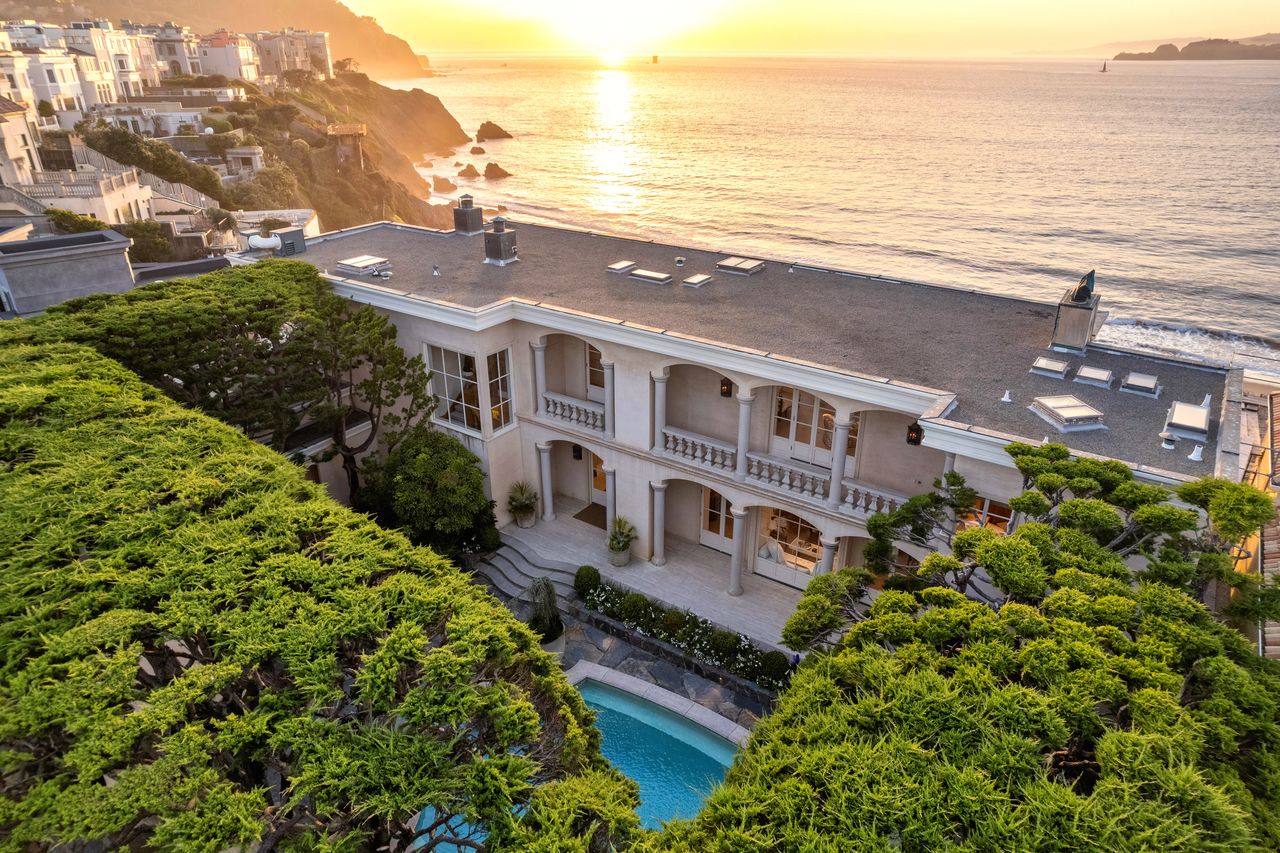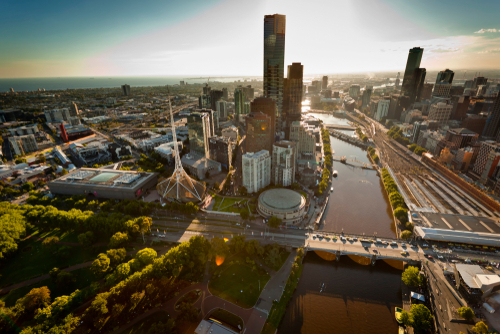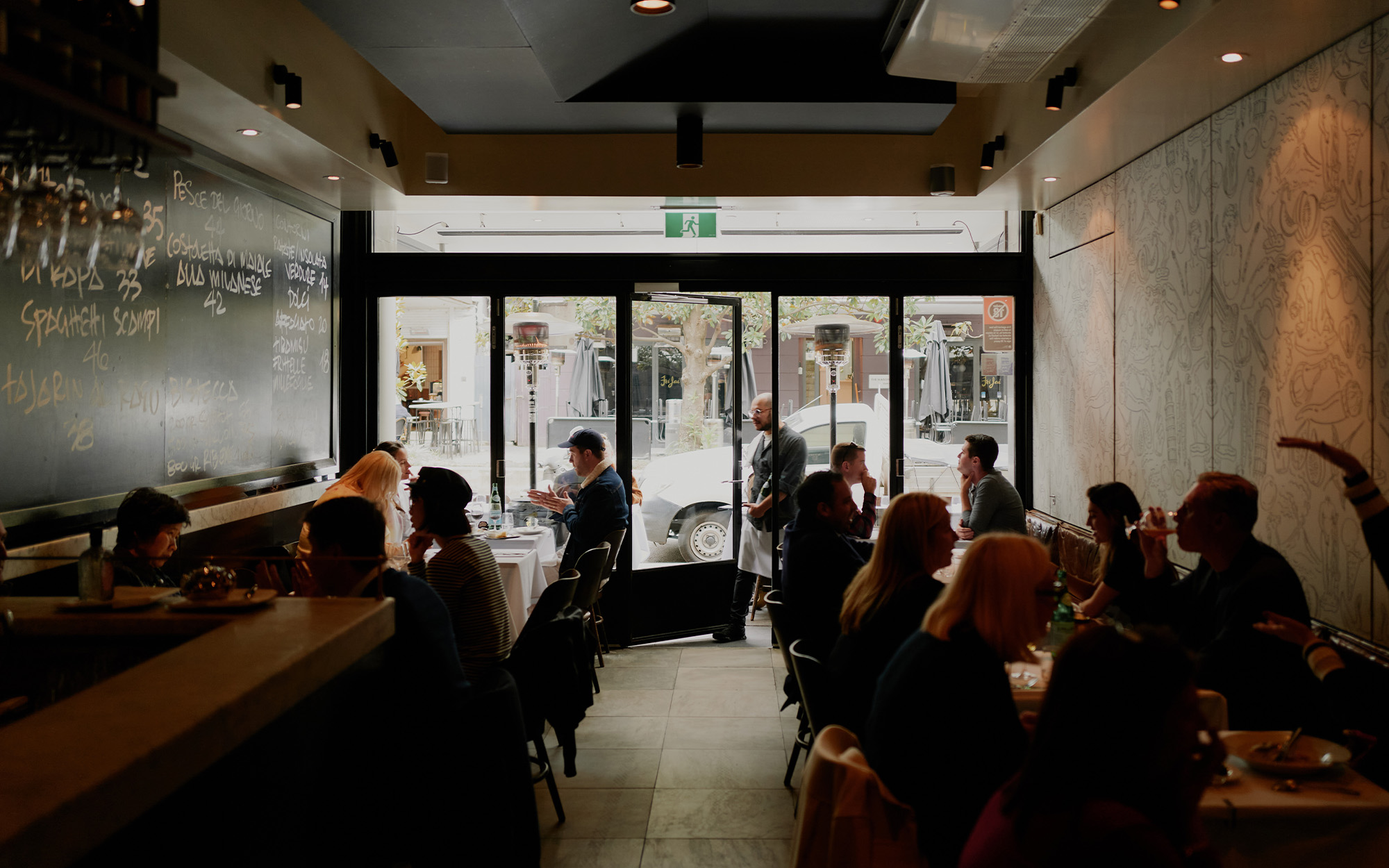San Francisco Mansion With the ‘Pacific Ocean as Your Backyard’ Lists for $32 Million
A San Francisco mansion on the edge of the Pacific Ocean is set to hit the market Friday for $32 million.
The 7,540-square-foot home is located in the city’s Sea Cliff neighbourhood, and offers more than 100 feet of water frontage, according to the listing with Neal Ward of Compass. That means almost every room has a view of the water and the Golden Gate Bridge, with Marin County in the distance.
“Sea Cliff is such an exclusive, private enclave,” Mr. Ward said. “There are only 25 homes on the cliff, which is literally on the edge of a cliff looking out onto the ocean. When people buy here, they live here for a lifetime.”
Indeed, the home is on the market for the first time in 35 years.
Built in 1941, the house was the former residence of the late Michael Taylor, the interior designer who was famous for developing the “California look.” The style was “hailed as the new look in decorating in the 1950s and 1960s” and is defined by open spaces, neutral colours and “the light, airy, casual California style,” according to his obituary in The New York Times. He bought the house in 1970, the listing said, and died 1986 at the age of 59.
The home was purchased in 1987 for $2.35 million by the late Arthur Ciocca, and his wife, Carlyse, according to records with PropertyShark. Arthur Ciocca founded The Wine Group in 1981, which is now the second largest wine company in the U.S. He died in December at the age of 84, according to his obituary in the Wine Industry Advisor.
“We bought it in 10 minutes after seeing it with no contingencies. That is how special it is,” Ms. Ciocca said in a statement. “Where else in San Francisco can you live with the Pacific Ocean as your backyard and be anywhere you want to go in 10 minutes?”
The couple brought the home down to the studs, “while retaining both the integrity of the original architecture and Michael Taylor’s iconic ‘California Look,’” the listing said. The couple worked with Porter and Steinwedell on the redesign, the same architects Taylor had employed.
The home retains its original exposed ceiling beams, and boasts herringbone-wood flooring, according to marketing materials. The living room also has a fireplace and a picture window looking out over the bay, and the formal dining room overlooks the water as well.
“We really wanted a California feel with an Italian influence to frame the view as it comes into the house,” Ms. Ciocca added. “At night, the view becomes like black glass, and you see
the running lights on the ships coming into the Bay and the lights of the Golden Gate Bridge.”
Other amenities include a library lounge with a wet bar that leads to the garden terrace, an upper level main bedroom suite with two bathrooms, each with a dressing room; two private offices; and a lower level with a lounge area, a wine tasting room and a terrace with views through mature cypress trees.
The pool was designed by Taylor, and there’s also a gated stairway to the beach, which only a handful of homes in Sea Cliff have, Mr. Ward noted, adding that the home has been meticulously maintained.
“For a property on the ocean, that’s so important,” he said. “This is in extraordinary condition. Someone may want to change some of the finishes to match their own tastes, but it’s move-in ready.”
 Copyright 2020, Dow Jones & Company, Inc. All Rights Reserved Worldwide. LEARN MORE
Copyright 2020, Dow Jones & Company, Inc. All Rights Reserved Worldwide. LEARN MORE
This stylish family home combines a classic palette and finishes with a flexible floorplan
Just 55 minutes from Sydney, make this your creative getaway located in the majestic Hawkesbury region.
As Paris makes its final preparations for the Olympic games, its residents are busy with their own—packing their suitcases, confirming their reservations, and getting out of town.
Worried about the hordes of crowds and overall chaos the Olympics could bring, Parisians are fleeing the city in droves and inundating resort cities around the country. Hotels and holiday rentals in some of France’s most popular vacation destinations—from the French Riviera in the south to the beaches of Normandy in the north—say they are expecting massive crowds this year in advance of the Olympics. The games will run from July 26-Aug. 1.
“It’s already a major holiday season for us, and beyond that, we have the Olympics,” says Stéphane Personeni, general manager of the Lily of the Valley hotel in Saint Tropez. “People began booking early this year.”
Personeni’s hotel typically has no issues filling its rooms each summer—by May of each year, the luxury hotel typically finds itself completely booked out for the months of July and August. But this year, the 53-room hotel began filling up for summer reservations in February.
“We told our regular guests that everything—hotels, apartments, villas—are going to be hard to find this summer,” Personeni says. His neighbours around Saint Tropez say they’re similarly booked up.
As of March, the online marketplace Gens de Confiance (“Trusted People”), saw a 50% increase in reservations from Parisians seeking vacation rentals outside the capital during the Olympics.
Already, August is a popular vacation time for the French. With a minimum of five weeks of vacation mandated by law, many decide to take the entire month off, renting out villas in beachside destinations for longer periods.
But beyond the typical August travel, the Olympics are having a real impact, says Bertille Marchal, a spokesperson for Gens de Confiance.
“We’ve seen nearly three times more reservations for the dates of the Olympics than the following two weeks,” Marchal says. “The increase is definitely linked to the Olympic Games.”

Getty Images
According to the site, the most sought-out vacation destinations are Morbihan and Loire-Atlantique, a seaside region in the northwest; le Var, a coastal area within the southeast of France along the Côte d’Azur; and the island of Corsica in the Mediterranean.
Meanwhile, the Olympics haven’t necessarily been a boon to foreign tourism in the country. Many tourists who might have otherwise come to France are avoiding it this year in favour of other European capitals. In Paris, demand for stays at high-end hotels has collapsed, with bookings down 50% in July compared to last year, according to UMIH Prestige, which represents hotels charging at least €800 ($865) a night for rooms.
Earlier this year, high-end restaurants and concierges said the Olympics might even be an opportunity to score a hard-get-seat at the city’s fine dining.
In the Occitanie region in southwest France, the overall number of reservations this summer hasn’t changed much from last year, says Vincent Gare, president of the regional tourism committee there.
“But looking further at the numbers, we do see an increase in the clientele coming from the Paris region,” Gare told Le Figaro, noting that the increase in reservations has fallen directly on the dates of the Olympic games.
Michel Barré, a retiree living in Paris’s Le Marais neighbourhood, is one of those opting for the beach rather than the opening ceremony. In January, he booked a stay in Normandy for two weeks.
“Even though it’s a major European capital, Paris is still a small city—it’s a massive effort to host all of these events,” Barré says. “The Olympics are going to be a mess.”
More than anything, he just wants some calm after an event-filled summer in Paris, which just before the Olympics experienced the drama of a snap election called by Macron.
“It’s been a hectic summer here,” he says.

AFP via Getty Images
Parisians—Barré included—feel that the city, by over-catering to its tourists, is driving out many residents.
Parts of the Seine—usually one of the most popular summertime hangout spots —have been closed off for weeks as the city installs bleachers and Olympics signage. In certain neighbourhoods, residents will need to scan a QR code with police to access their own apartments. And from the Olympics to Sept. 8, Paris is nearly doubling the price of transit tickets from €2.15 to €4 per ride.
The city’s clear willingness to capitalise on its tourists has motivated some residents to do the same. In March, the number of active Airbnb listings in Paris reached an all-time high as hosts rushed to list their apartments. Listings grew 40% from the same time last year, according to the company.
With their regular clients taking off, Parisian restaurants and merchants are complaining that business is down.
“Are there any Parisians left in Paris?” Alaine Fontaine, president of the restaurant industry association, told the radio station Franceinfo on Sunday. “For the last three weeks, there haven’t been any here.”
Still, for all the talk of those leaving, there are plenty who have decided to stick around.
Jay Swanson, an American expat and YouTuber, can’t imagine leaving during the Olympics—he secured his tickets to see ping pong and volleyball last year. He’s also less concerned about the crowds and road closures than others, having just put together a series of videos explaining how to navigate Paris during the games.
“It’s been 100 years since the Games came to Paris; when else will we get a chance to host the world like this?” Swanson says. “So many Parisians are leaving and tourism is down, so not only will it be quiet but the only people left will be here for a party.”
This stylish family home combines a classic palette and finishes with a flexible floorplan
Just 55 minutes from Sydney, make this your creative getaway located in the majestic Hawkesbury region.






















